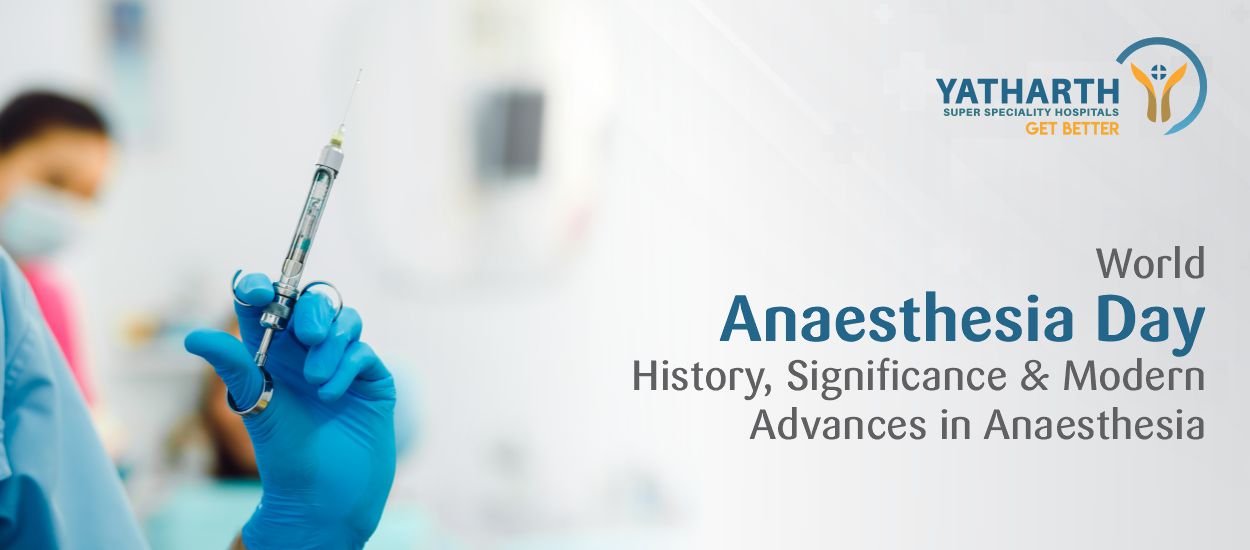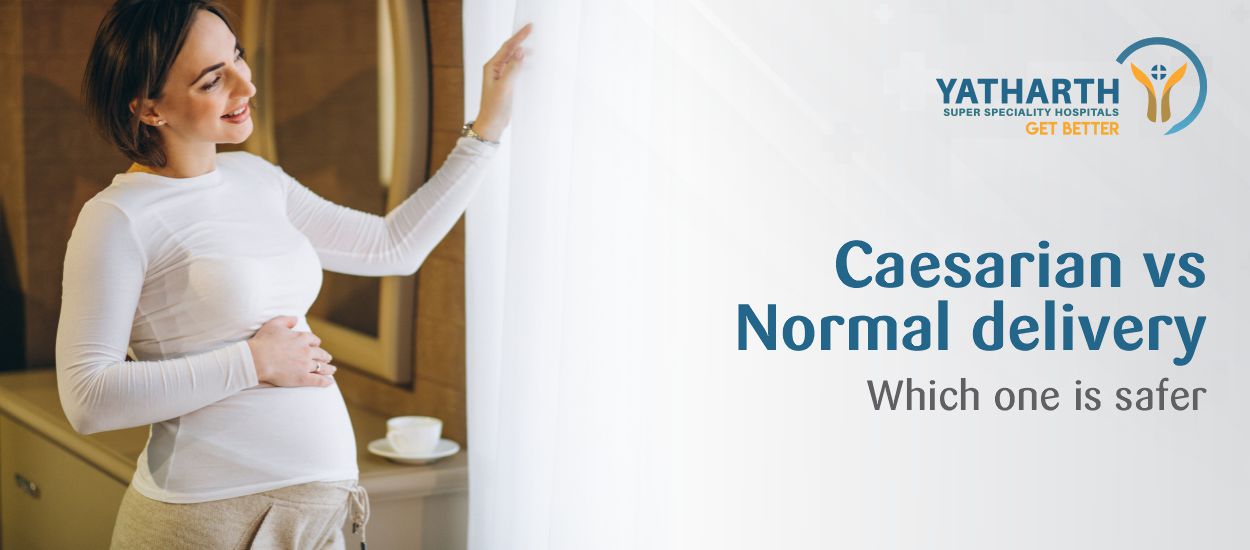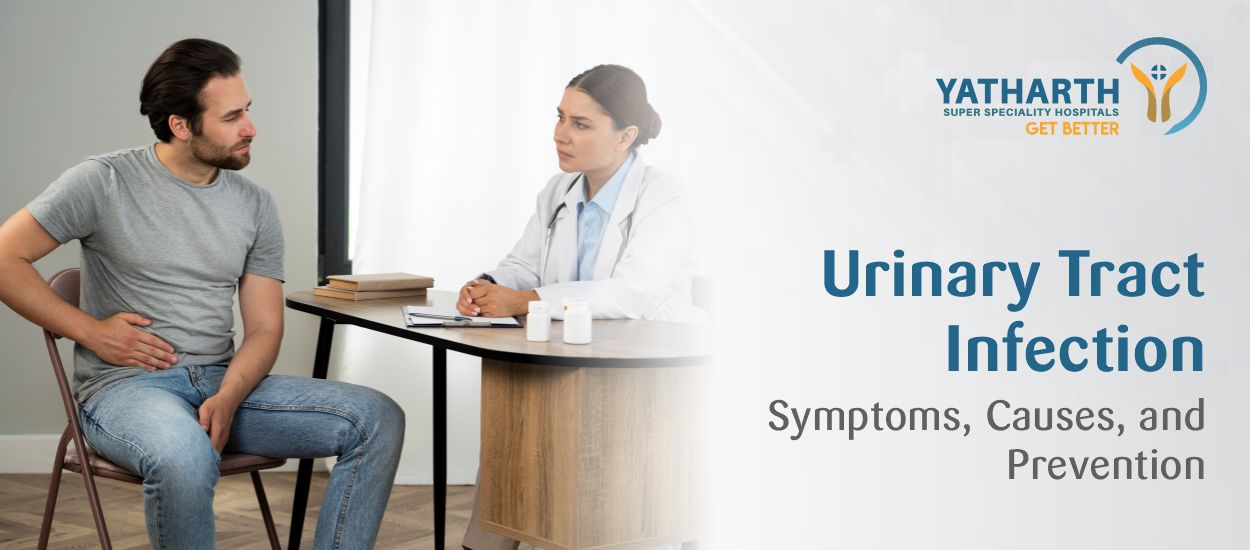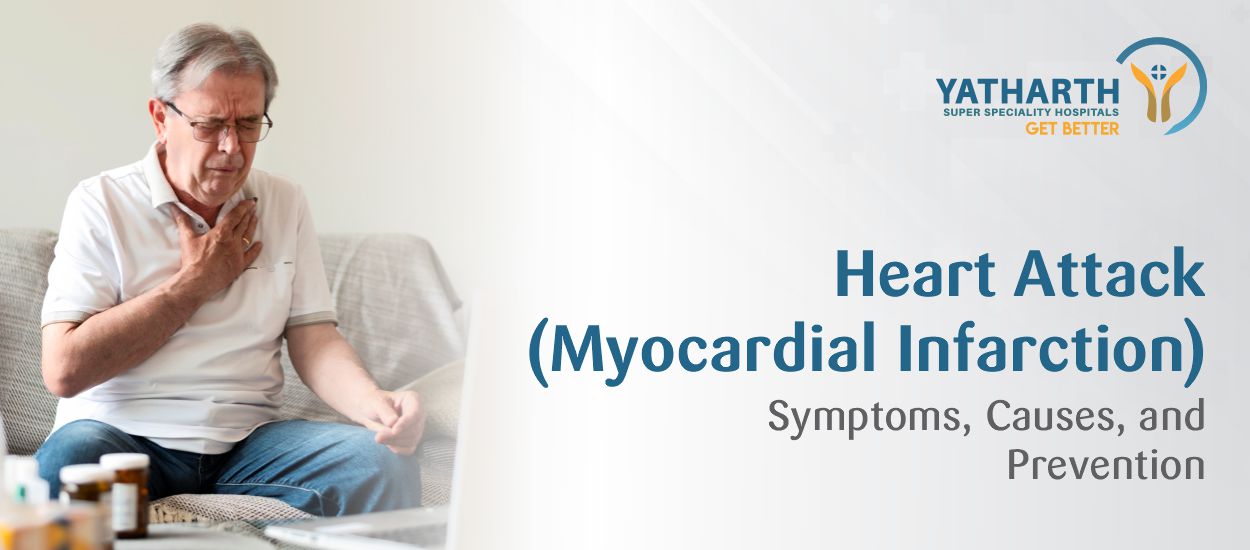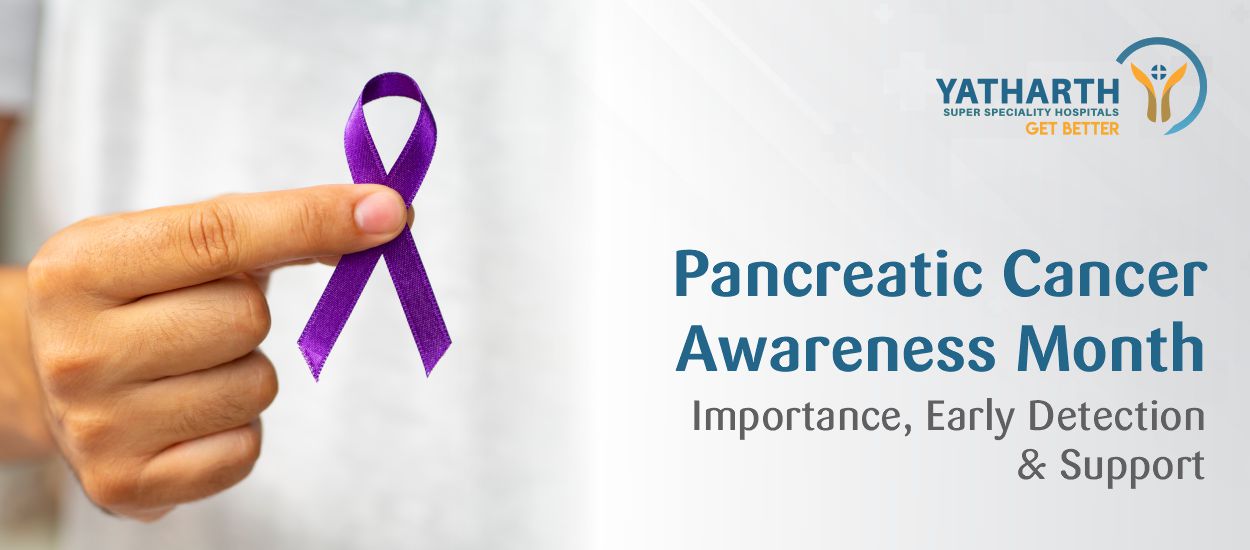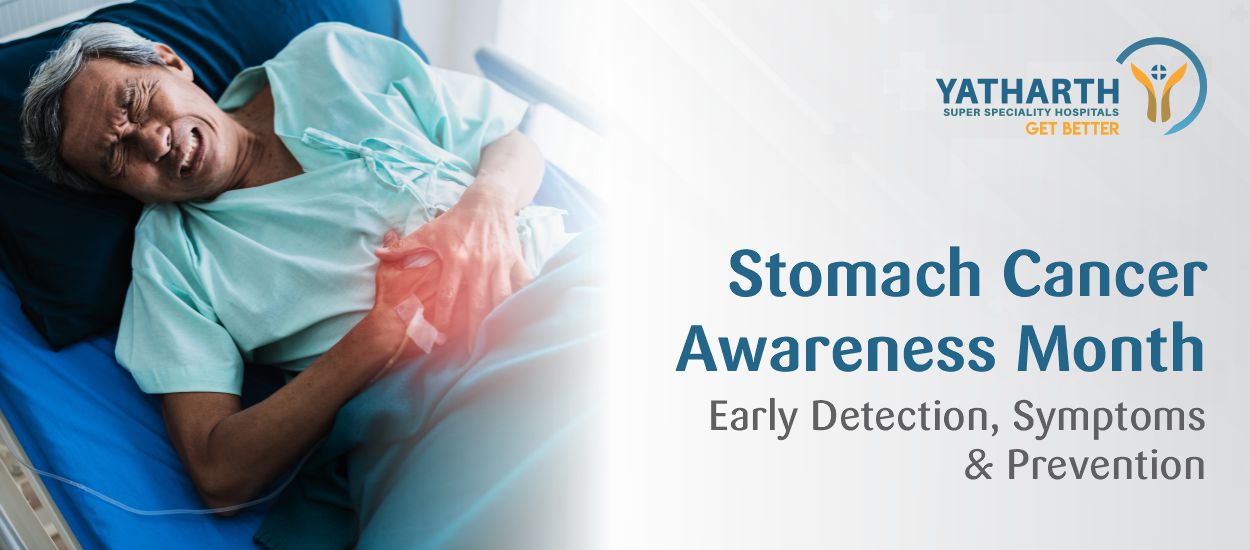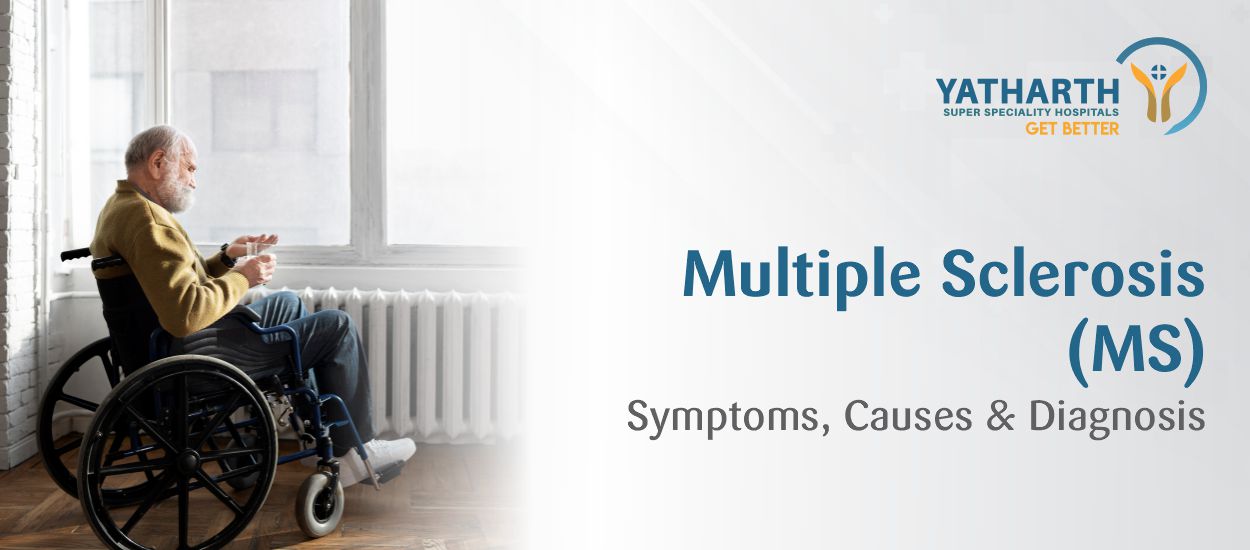World Anaesthesia Day is observed every year on the 16th of October to celebrate the development of anaesthesia - a major milestone in the progression of medical science, which transformed surgery from a painful ordeal to a pain-free procedure. The observance of World Anaesthesia Day serves as a reminder of the progress made in anaesthesiology, while acknowledging the expertise of anaesthesiologists. In this article, we will explore the history, significance, theme, and modern advances in anaesthesia, and understand how this vital medical field continues to shape safer and more effective healthcare practices around the world.
What is World Anaesthesia Day and Why is it Celebrated?
World Anaesthesia Day, observed every year on 16 October, marks one of the greatest turning points in the history of medicine. On this day in 1846, Dr William T. G. Morton administered ‘ether’ to a patient at Massachusetts General Hospital during surgery, demonstrating for the first time that pain could be safely eliminated during an operation. This successful event not only revolutionised surgery but also laid the foundation for modern anaesthesiology as a vital medical specialty.
Often referred to as “Ether Day,” the occasion celebrates the profound impact of anaesthesia on surgical safety, patient comfort, and global healthcare advancement. Before this discovery, surgeries were performed without pain relief, leading to immense suffering and limited medical possibilities. The introduction of anaesthesia transformed medical practice, allowing complex, life-saving surgeries to become routine procedures while dramatically reducing mortality rates.
Today, World Anaesthesia Day is celebrated worldwide to honour the contributions of anaesthesiologists, raise awareness about safe anaesthesia practices, and promote equitable access to anaesthetic care, especially in low-resource regions. The observance of this day also highlights how the field has evolved from basic inhaled gases to sophisticated techniques supported by advanced monitoring systems, ensuring precision and safety in every procedure.
Understanding the Theme of World Anaesthesia Day 2025
Each year, World Anaesthesia Day highlights a theme that reflects key challenges and progress in modern medicine. The theme for 2025, “Anaesthesiology in Health Emergencies,” focuses on the vital role of anaesthesiologists in managing critical situations and saving lives.
This year’s theme draws attention to the following areas:
Anaesthesiologists as Frontline Responders
Anaesthesiologists are among the first responders in medical emergencies such as natural disasters, pandemics, accidents, and mass casualties. Their training allows them to manage ventilators, administer emergency anaesthesia, and monitor vital signs under pressure.
Strengthening Critical and Emergency Care
Anaesthesiologists form the backbone of intensive care units (ICUs), managing ventilators, supporting patients with trauma or respiratory failure, and administering emergency anaesthesia with precision under pressure.
Collaboration in Crisis Management
In emergency settings, they work alongside trauma surgeons, emergency physicians, and critical care teams to provide rapid, coordinated, and multidisciplinary care.
Building a Resilient Healthcare Framework
The theme emphasises the importance of expanding access to emergency anaesthesia and critical care services, especially in developing regions where healthcare infrastructure remains limited.
Preparing for the Future Through Innovation
Continuous training, simulation-based learning, and the use of modern technology ensure anaesthesia teams are equipped to respond effectively to evolving global health crises.
By emphasising this theme, World Anaesthesia Day 2025 recognises the dedication of anaesthesiologists worldwide and encourages hospitals to strengthen their emergency care infrastructure, ensuring patient safety in every circumstance.
The Evolution and Modern Landscape of Anaesthesia
The journey of anaesthesia from its early beginnings to the advanced systems used today reflects one of medicine’s greatest transformations. What started as a simple discovery in the 19th century has evolved into a highly specialised discipline that ensures surgical precision, comfort, and safety for patients across all medical fields.
Key milestones in the evolution of anaesthesia include:
-
The discovery of ether anaesthesia (1846): Dr William T. G. Morton’s public demonstration of ether revolutionised surgical practice, marking the official birth of modern anaesthesia.
-
Introduction of chloroform and nitrous oxide: Subsequent discoveries by James Young Simpson and Horace Wells expanded the options available to anaesthetists, offering safer and more reliable pain control.
-
Rise of local and regional techniques: Advances in nerve blocks, spinal, and epidural anaesthesia made it possible to perform surgeries without rendering patients unconscious, significantly reducing risks.
-
Development of modern monitoring systems: The introduction of pulse oximetry, ECG, capnography, and automated drug delivery systems has improved patient safety by allowing real-time tracking of vital parameters.
-
Integration of technology and precision medicine: Today’s anaesthesia practice uses computer-assisted drug dosing, ultrasound-guided procedures, and artificial intelligence (AI)-supported monitoring to enhance accuracy and individualised care.
The modern landscape of anaesthesia extends far beyond the operating theatre. Anaesthesiologists now play a key role in intensive care, pain management, and perioperative medicine, ensuring patients remain safe and comfortable before, during, and after complex surgical procedures.
Understanding the Different Types of Anaesthesia
Anaesthesia is not a single technique but a range of carefully designed approaches that allow doctors to perform surgeries safely and comfortably. The type of anaesthesia used depends on the procedure, the patient’s overall health, and the expected duration of surgery. The major types of anaesthesia include:
General Anaesthesia
Under general anaesthesia, the patient is put into a temporary, controlled state of unconsciousness, meaning they are completely unaware and feel no pain during the surgery. It is commonly used for major operations such as those involving the heart, abdomen, or brain. Throughout the procedure, the anaesthesiologist carefully monitors and manages the patient’s breathing, blood pressure, and other vital signs to ensure complete safety and stability.
Regional Anaesthesia
This technique numbs a larger area of the body while the patient remains awake or lightly sedated. Common forms include spinal, epidural, and nerve block anaesthesia, often used in orthopaedic, obstetric, or urological surgeries.
Local Anaesthesia
Under local anaesthesia, only a small, specific area of the body is numbed using an injection or a topical cream. The patient stays fully awake and aware but feels no pain in the treated region. This type of anaesthesia is commonly used for minor surgical procedures, dental treatments, or simple diagnostic procedures, and patients usually recover quickly without any lasting effects.
Sedation or Monitored Anaesthesia Care (MAC)
In this approach, patients remain relaxed and drowsy but can breathe independently. It is used during short diagnostic or therapeutic procedures such as endoscopy or cataract surgery.
Each of these methods is carefully selected and monitored by the anaesthesiology team to ensure maximum comfort, minimal risk, and smooth recovery. Continuous advancements in anaesthetic drugs and monitoring technologies have further improved the precision and safety of these techniques.
Beyond the Operating Room: The Expanding Role of Anaesthesiologists
The role of anaesthesiologists extends far beyond putting patients to sleep during surgery. They are vital members of the multidisciplinary medical team, ensuring patient safety, comfort, and stability across multiple stages of care. With growing medical complexity, their expertise now covers several specialised areas.
Key roles of anaesthesiologists in modern medicine include:
-
Pre-operative Assessment: Before surgery, anaesthesiologists evaluate the patient’s medical history, allergies, and overall fitness for anaesthesia. They tailor the anaesthetic plan based on age, existing conditions, and the type of procedure to minimise risk.
-
Intraoperative Management: During surgery, they monitor vital functions such as heart rate, oxygen levels, and blood pressure while adjusting medications to maintain stability and control pain effectively.
-
Postoperative Care and Pain Relief: After surgery, they oversee recovery from anaesthesia, manage postoperative pain through medications or regional blocks, and ensure smooth transition to the recovery or intensive care unit.
-
Critical and Emergency Care: Anaesthesiologists play a central role in intensive care units (ICUs) and emergency departments, managing ventilators, trauma patients, and those with life-threatening conditions.
-
Chronic Pain and Palliative Care: Many anaesthesiologists specialise in pain medicine, helping patients manage chronic pain, cancer-related discomfort, or postoperative complications through advanced pain management therapies.
By combining medical knowledge, technical precision, and rapid decision-making, anaesthesiologists help ensure that patients receive the safest and most comfortable care possible, both inside and outside the operating theatre.
Myths and Facts About Anaesthesia
Despite being one of the safest and most advanced medical practices today, anaesthesia is still surrounded by misconceptions that can cause anxiety among patients before surgery. Understanding the facts helps build confidence and trust in the procedure and the specialists who administer it. Common myths and facts about anaesthesia include:
-
Myth: Anaesthesia isn’t safe.
Fact: Modern anaesthesia is extremely safe when administered by qualified professionals. Continuous monitoring, improved medications, and advanced technology have significantly reduced risks, even for complex or lengthy surgeries. -
Myth: You might not wake up after anaesthesia.
Fact: This is one of the most common fears, but the chances of not waking up are exceptionally rare. Anaesthesiologists carefully monitor vital signs and adjust medications throughout the procedure to ensure complete safety. -
Myth: Anaesthesia is the same for everyone.
Fact: Anaesthesia is highly individualised. The dosage and technique depend on the patient’s age, medical condition, weight, and type of surgery. Children, elderly patients, and those with chronic illnesses receive specialised plans for maximum safety. -
Myth: Anaesthesia only puts you to sleep.
Fact: Beyond inducing sleep, anaesthesia controls pain, maintains stable vital functions, and ensures muscle relaxation—allowing surgeons to operate precisely without causing distress to the patient. -
Myth: Pain after surgery means anaesthesia didn’t work.
Fact: Postoperative pain is a normal response as the body heals. Anaesthesiologists manage this through pain-relief medications, nerve blocks, or epidurals to ensure comfort during recovery.
Anaesthesia Excellence at Yatharth Hospital
At Yatharth Hospital, Noida, anaesthesia care forms the foundation of every successful surgical outcome. The hospital’s Department of Anaesthesiology combines medical expertise, advanced monitoring systems, and modern techniques to ensure patient safety and comfort across all surgical and critical care procedures. Key highlights of anaesthesia services at Yatharth Hospital include:
Advanced Technology and Equipment
Equipped with state-of-the-art modular operation theatres, advanced ventilators, and precision monitoring systems, Yatharth ensures every patient receives anaesthetic care that meets global safety standards.
Highly Skilled Anaesthesiologists
The hospital’s team of experienced anaesthesiologists works closely with surgeons, intensivists, and critical care experts to provide tailored anaesthetic plans for each patient. Their expertise covers general, regional, and local anaesthesia, as well as sedation and critical care management.
Patient-Centred Safety Protocols
Strict pre-operative evaluations, continuous intraoperative monitoring, and dedicated postoperative care protocols are followed to minimise risks and ensure smooth recovery.
Comprehensive Coverage Across Specialties
From cardiac, neurological, and orthopaedic surgeries to paediatric and minimally invasive procedures, the anaesthesia team plays a key role in maintaining precision, safety, and optimal surgical outcomes.
By integrating innovation with compassionate care, Yatharth Hospital continues to uphold the highest standards of anaesthesia practice, ensuring every patient experiences safe, comfortable, and high-quality care at every stage of treatment.
Frequently Asked Questions (FAQs)
Why is anaesthesia used?
Anaesthesia allows patients to undergo surgical or diagnostic procedures without pain or distress. It helps maintain comfort and stability while enabling surgeons to perform operations safely and precisely.
Why is Anaesthesia Day celebrated?
World Anaesthesia Day is celebrated on 16 October each year to commemorate the first successful public demonstration of ether anaesthesia in 1846 and to honour the contributions of anaesthesiologists worldwide.
Who discovered anaesthesia and when was it first used?
Anaesthesia was first publicly demonstrated by Dr William T. G. Morton on 16 October 1846 at Massachusetts General Hospital, marking the birth of modern surgical anaesthesia.
Why is World Anaesthesia Day important for patients?
The day raises awareness about safe anaesthesia practices, patient safety, and the crucial role of anaesthesiologists in every surgical and emergency setting.
What is the difference between general and local anaesthesia?
General anaesthesia renders the patient completely unconscious, while local anaesthesia numbs only a specific area. The choice depends on the type and duration of the procedure.
Can anaesthesia be used for pain management outside surgery?
Yes. Anaesthesiologists often manage chronic pain, cancer-related pain, and postoperative discomfort using advanced pain-relief techniques and medications.
What are the common risks of anaesthesia?
Modern anaesthesia is extremely safe. Minor side effects such as nausea or sore throat may occur, while serious complications are rare due to advanced monitoring and expert supervision.
Is anaesthesia safe for children and elderly patients?
Yes. Special precautions, tailored doses, and dedicated paediatric or geriatric protocols ensure anaesthesia is safe for all age groups when administered by trained specialists.
What precautions are taken before giving anaesthesia?
Before surgery, anaesthesiologists review medical history, allergies, and existing conditions, conduct preoperative tests, and adjust medications to minimise risks.
Where can I find advanced anaesthesia care near me in Noida?
Yatharth Hospital, Noida, offers advanced anaesthesia services supported by skilled specialists and modern monitoring systems, ensuring safe and comfortable surgical experiences.
